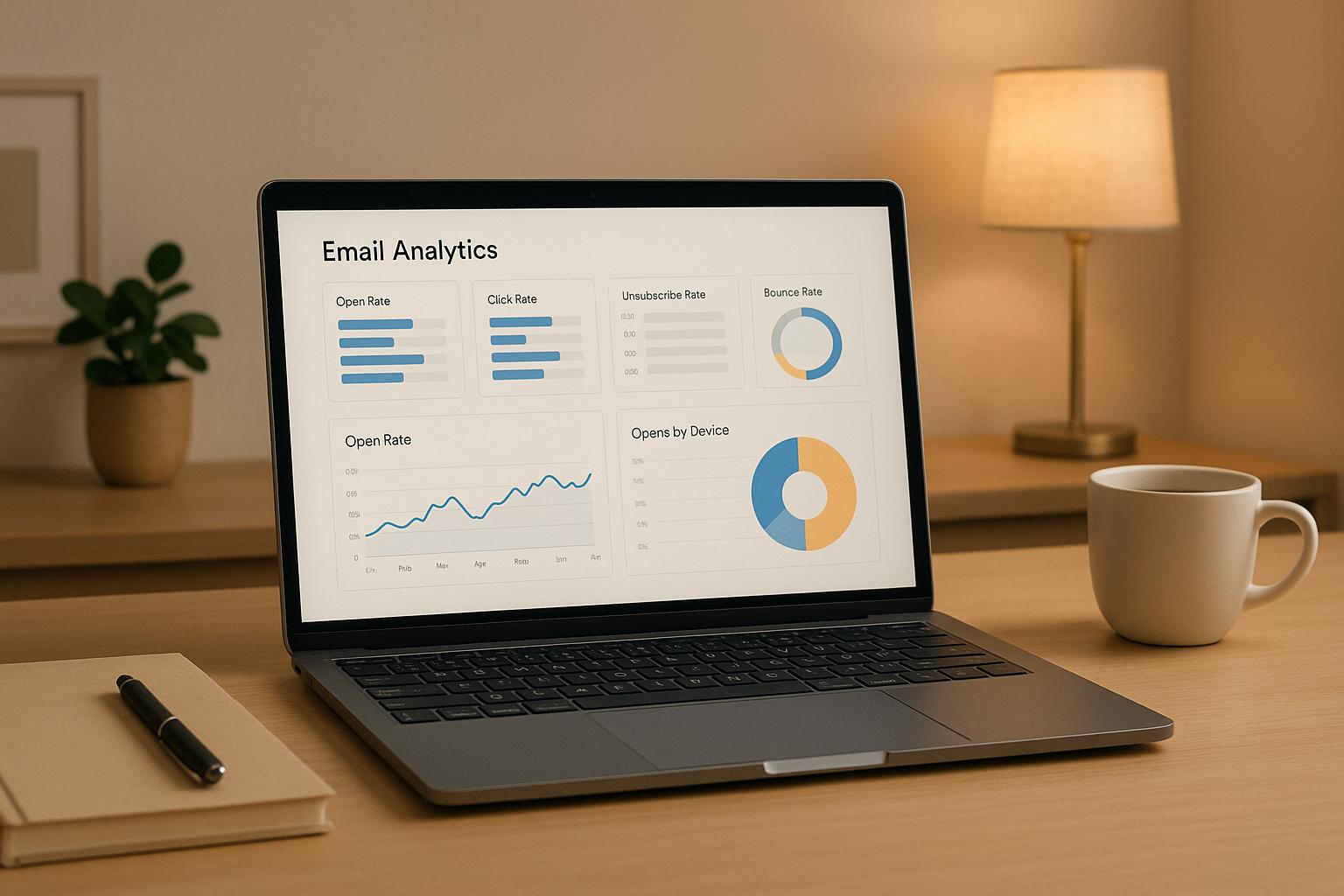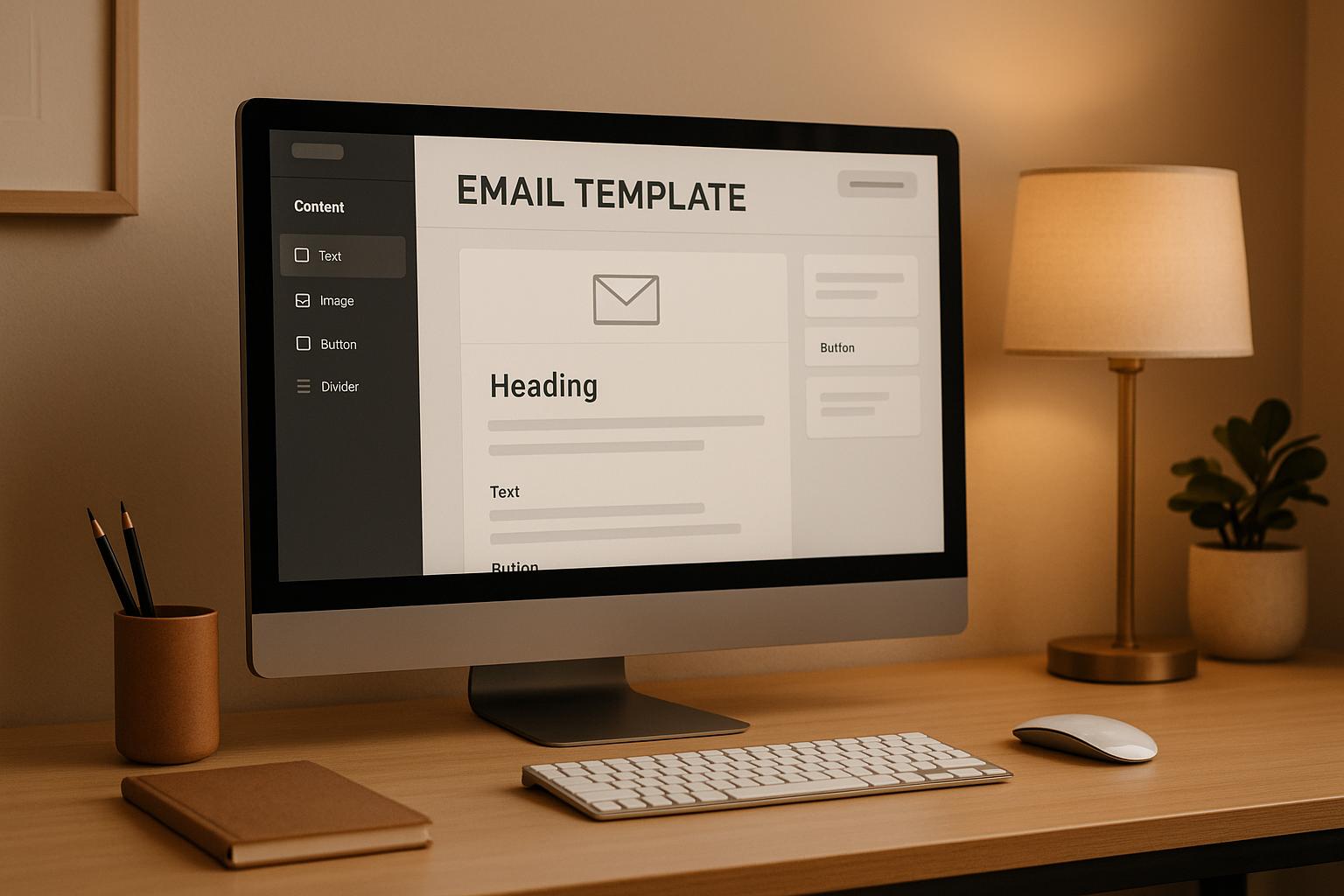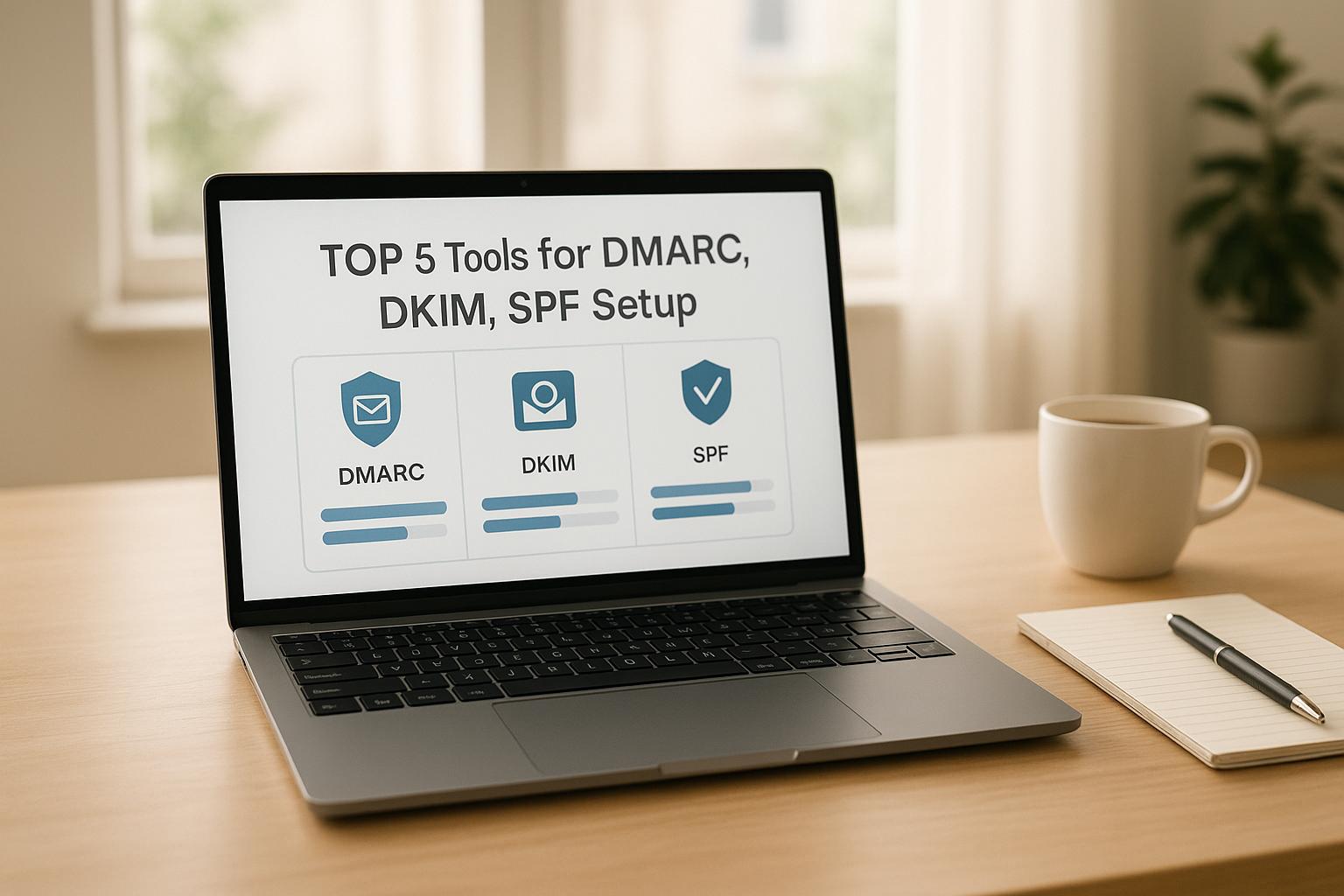Cross-channel personalization is reshaping how businesses approach B2B sales funnels. By integrating platforms like email, SMS, websites, and apps, companies can create seamless buyer experiences. Here's why it matters:
- 77% of B2B buyers find their purchasing process complex.
- 85% of buyers dismiss companies that don’t personalize outreach.
- 65% of buyers switch brands if communication isn’t relevant.
- Only 8% of companies successfully personalize across channels, leaving a huge opportunity for improvement.
AI-powered tools now make it easier to analyze data, segment audiences, and deliver tailored content. Platforms highlighted in the Email Service Business Directory help businesses implement these strategies, offering pricing tiers that scale with needs.
Key Takeaways:
- Email remains a top channel for B2B engagement, offering high ROI.
- Automation tools simplify workflows and improve personalization.
- Integration is critical - unifying CRM, e-commerce, and analytics data enhances customer insights.
For large enterprises, tools like Salesforce Marketing Cloud offer advanced features, while mid-sized businesses benefit from solutions like ActiveCampaign. Smaller companies can explore budget-friendly options such as Brevo.
Pro tip: Start with small wins like dynamic email content and expand to multi-channel strategies over time. Personalization isn’t just desired - it’s expected.
B2B Multi Channel Marketing And Sales: How to Drive Growth With a Blueprint
1. Email Service Business Directory
This directory goes beyond general overviews by offering detailed insights into pricing options and integration features, helping businesses pinpoint email marketing solutions tailored for cross-channel personalization in intricate sales funnels.
What sets this directory apart is its focus on platforms that support essential integration capabilities and advanced customer segmentation strategies, like eRFM modeling (engagement, recency, frequency, monetary). For companies managing long buying cycles - spanning months or even years - basic demographic segmentation isn’t enough. They need tools capable of unifying data from CRM systems, e-commerce platforms, and automation tools to gain a deeper understanding of customer preferences and behaviors. This curated resource bridges the gap between strategic decision-making and operational implementation for complex B2B funnels.
Marketers exploring the directory can zero in on automation features designed to simplify intricate nurturing workflows. Considering that 98% of B2B marketers view automation as indispensable, the directory’s focus on automation-centric platforms is especially relevant.
Pricing Tiers That Scale With Your Needs
The directory categorizes platforms into three pricing tiers:
- Boost Plan ($299/month): Ideal for smaller businesses managing up to 1,000 contacts.
- Advanced Plan ($999/month): Suited for growing companies with up to 10,000 contacts, offering CRM integration capabilities.
- All-in Plan ($2,999/month): Designed for enterprise-level operations, this tier removes contact limits entirely, making it perfect for managing large-scale prospect databases.
These pricing models are not just theoretical - they deliver results. For example, Tata Harper saw a 43% increase in total attributed revenue in Q1 2024 by consolidating email and SMS marketing into a unified platform. This allowed them to customize workflows based on channel preferences and analyze customer engagement patterns. Similarly, Linksoul achieved an 82% year-over-year jump in flow revenue by integrating SMS into nearly all of its automated email campaigns, leveraging unified customer data for hyper-targeted strategies.
Platforms That Excel in Journey Orchestration
The directory also highlights platforms that shine in orchestrating customer journeys across multiple touchpoints. As Jaina Mistry, Director of Brand and Content Marketing, explains:
"This ties back to the idea of email being a full-funnel experience, fostering intimacy with your audience and focusing on brand awareness. Building relationships through email requires looking at multiple events over time, as customer journeys can take years to develop, not just weeks or months. Email is essential for brands and organizations to stay in touch and nurture their audience throughout this journey."
To enable effective cross-channel personalization, these platforms consolidate customer data from various sources, offering a unified view of behaviors and preferences. Most featured platforms provide bidirectional integrations with CRMs, customer data platforms, analytics tools, and even advertising platforms.
Tailoring Solutions to Unique Business Needs
While the directory offers a well-curated starting point, businesses should still conduct additional evaluations to address their specific requirements. Features like AI-powered predictive lead scoring, dynamic content blocks, and support for multi-brand complexities may be crucial for some organizations. Even so, the directory significantly narrows the field, making it easier for businesses to find solutions that balance enterprise-level capabilities with user-friendly functionality.
2. Alternative Cross-Channel Platforms
While the Email Service Business Directory highlights top tools for email marketing, the B2B marketing world offers a variety of cross-channel platforms that excel in personalization and automation. These platforms go beyond email-specific tools, providing businesses with flexible options tailored to their unique sales funnels and budgets.
Enterprise-Grade Solutions for Complex B2B Operations
For large enterprises navigating intricate B2B sales cycles, Salesforce Marketing Cloud is a standout option. Starting at $25/month, it delivers advanced AI-powered features and a highly customizable setup. However, its steep learning curve and higher price point might make it less accessible for smaller businesses.
On the other hand, HubSpot Marketing Hub blends enterprise-level functionality with affordability, starting at $20/month. It centralizes data from multiple channels into a single, streamlined dashboard, supports robust campaign automation, and integrates seamlessly with HubSpot's CRM tools. These platforms cater to a range of enterprise needs, complementing the tools featured in the directory.
Mid-Market Platforms Driving Results
For mid-sized businesses seeking a balance between cost and capability, ActiveCampaign has become a go-to option. With plans starting at $15/month, it offers strong third-party integrations and detailed reporting to power data-driven campaigns across email, SMS, and social media. Notable examples include a 13% increase in purchase frequency and a 127% boost in email click rates through automated workflows.
Brevo (formerly Sendinblue) targets small to medium-sized businesses with its pay-per-email pricing model, starting at $9/month. This approach is ideal for companies with irregular sending schedules or seasonal campaigns, though setting up advanced automations may require extra effort.
Specialized Tools for Unique B2B Needs
If you're looking for a tool tailored to specific marketing tasks, Airtable offers a database-focused approach. Starting at $20/month per user, it integrates third-party data and is perfect for managing prospect databases and custom workflows.
For technical marketing teams, Mailtrap is an email testing and deliverability platform starting at $15/month. Its API-first design and detailed analytics help optimize email performance, and its easy setup makes it a favorite for teams focused on technical precision.
Performance Analytics and Cross-Channel Orchestration
When it comes to cross-channel analytics, Whatagraph stands out with its custom-quoted pricing. This platform allows marketers to create new metrics quickly and consolidate data from multiple sources. With B2B buyers using an average of 10+ channels to engage with vendors - and 75% preferring a sales process without direct interaction - tracking and optimizing every touchpoint is more important than ever.
Integration Capabilities That Matter
Many of these platforms include Customer Data Platform (CDP) features, enabling businesses to unify data from CRM systems, websites, social media, and email interactions into comprehensive customer profiles. For example, Thirty Madison achieved a 50% increase in converted subscribers in March 2023 by using such integrations to deliver timely, relevant messages across channels. These tools provide the flexibility to align with diverse cross-channel marketing strategies.
| Platform | Starting Price | Best For | Unique Benefit |
|---|---|---|---|
| Salesforce Marketing Cloud | $25/month | Large enterprises | AI-powered automation |
| HubSpot Marketing Hub | $20/month | Growing businesses | All-in-one ecosystem |
| ActiveCampaign | $15/month | Data-driven teams | Third-party integrations |
| Brevo | $9/month | Small businesses | Pay-per-email model |
| Airtable | $20/month per user | Custom workflows | Database flexibility |
Choosing the right platform depends on your specific needs. Businesses with long, complex sales cycles may benefit from advanced features and integrations, while those with shorter, more transactional processes might prefer simpler, budget-friendly solutions.
sbb-itb-6e7333f
Advantages and Disadvantages
This section breaks down the key strengths and weaknesses of various cross-channel personalization platforms. By understanding these aspects, B2B marketers can choose solutions that fit their specific funnel challenges and budget constraints.
Enterprise Solutions: Balancing Power and Complexity
Salesforce Marketing Cloud stands out for its high level of customization and strong API integrations, making it ideal for complex B2B operations that demand deep personalization. On the flip side, its steep learning curve and high costs can be daunting for smaller teams. While it excels in attribution and lead scoring, the platform requires significant technical expertise to unlock its full potential.
HubSpot Marketing Hub offers a blend of enterprise-grade functionality and user-friendly design. Its seamless CRM integration ensures smooth data flow across channels, enabling advanced lead nurturing campaigns. However, its premium pricing can be a barrier, and it may struggle to handle highly complex, multi-brand use cases effectively.
Mid-Market Platforms: Efficiency with Trade-Offs
ActiveCampaign provides detailed control over automation workflows and integrates well with third-party tools, making it a strong option for data-driven personalization. Its reporting features are particularly useful for optimizing cross-channel campaigns. That said, its complexity can slow down campaign deployment when compared to more intuitive platforms.
| Platform | Key Advantages | Main Disadvantages | Best B2B Funnel Use Case |
|---|---|---|---|
| Salesforce Marketing Cloud | Advanced customization, powerful APIs, strong attribution | High complexity, expensive, steep learning curve | Complex enterprise sales cycles with multiple touchpoints |
| HubSpot Marketing Hub | Seamless CRM integration, easy to use, quick to deploy | Premium pricing, limited multi-brand capabilities | Growing businesses focused on lead nurturing |
| ActiveCampaign | Detailed automation control, robust integrations, strong reporting | Complex setup, slower campaign launches | Data-driven personalization and behavioral segmentation |
Performance and ROI Considerations
The success of any platform depends heavily on how well it is implemented and the expertise of the team using it. For example, companies leveraging unified data platforms report a 166% increase in conversions thanks to personalized, AI-powered content.
Lead scoring capabilities also vary widely. While most platforms offer basic scoring, predictive behavioral scoring is typically reserved for enterprise-level solutions. Accurate lead scoring can directly impact conversion rates, with some businesses seeing up to a 30% improvement.
Integration and Data Management Challenges
Enterprise platforms often come with built-in integrations, while mid-market tools may rely on third-party connectors, which can complicate data management.
"Addressing data silos is crucial for unified customer views."
- FlareLane
Despite the importance of automation - valued by 98% of B2B marketers - complex implementations can delay seeing returns. Unified data is the foundation for effective cross-channel personalization, making it a critical factor in platform selection.
Attribution and Analytics Limitations
Attribution and analytics are critical but can also be challenging. Multi-touch attribution, for example, varies significantly between platforms. Enterprise solutions tend to offer comprehensive attribution models, while smaller tools often stick to basic first-touch or last-touch methods.
Another growing concern is cookieless tracking. With privacy regulations tightening, relying on traditional cookie-based tracking methods can pose compliance risks and lead to data inaccuracies, especially for businesses operating in regulated sectors.
Final Recommendations
When crafting a cross-channel personalization strategy, it’s essential to align your approach with your business goals and resources. Here’s how to get started:
Unify your data for better personalization. Before diving into platform selection, consolidate all customer interactions into a single source. This step is critical because the quality of your personalization efforts depends on having a clear and comprehensive view of your customer data.
Match platform complexity to your team's capabilities and budget. While enterprise-level solutions can deliver advanced results, they often require substantial technical expertise. For smaller or growing businesses, look for platforms that strike a balance - offering both advanced features and a user-friendly interface. Prioritize tools with robust automation options to enable detailed segmentation strategies.
Maximize the benefits of multi-channel integration. Multi-channel campaigns deliver impressive results, with a 287% higher purchase rate compared to single-channel efforts. To capitalize on this, consider anchoring your strategy with email, which often acts as a high-performing channel.
Focus on email as a cornerstone of your strategy. Email marketing offers a $36 return for every dollar spent. Personalization can significantly boost performance, with subject lines increasing open rates by 26% and personalized content driving click-through rates up to 14%. Use resources like the Email Service Business Directory to find platforms that integrate seamlessly with your broader marketing tools.
Plan for scalability with flexible technology. As your business grows, your personalization needs will evolve. Invest in systems with API integrations and modular components to ensure your technology stack can expand without requiring costly migrations.
Adopt a phased implementation approach. Start small by introducing core features like dynamic email content and basic behavioral segmentation. These quick wins not only demonstrate ROI to stakeholders but also build your team’s confidence. Once these foundations are in place, you can gradually expand to more complex cross-channel strategies, minimizing risk along the way.
FAQs
How can small and medium-sized businesses use cross-channel personalization effectively without a large budget?
Small and medium-sized businesses can make cross-channel personalization work by focusing on tools and strategies that deliver results without breaking the bank. Start with budget-friendly, user-friendly platforms that connect key marketing channels like email, social media, and your website. Many of these tools are built with smaller teams in mind, offering features like automation and analytics to simplify the process.
Leverage the customer data you already have to craft personalized experiences across different channels. For instance, you could customize email campaigns based on how users interact with your site or create audience segments to send more relevant messages. Focus on a few important channels to start, fine-tune your strategy as you go, and choose platforms that provide clear, measurable results to make the most of your resources.
What challenges do businesses face when combining CRM, e-commerce, and analytics data for cross-channel personalization?
Businesses face a few persistent challenges when trying to integrate CRM, e-commerce, and analytics data to deliver smooth, cross-channel personalization. One of the biggest obstacles is dealing with data silos - when information is tucked away in separate systems that don't talk to each other. This lack of connection makes it tough to piece together a complete picture of your customers.
Another hurdle is the technical complexity of syncing multiple platforms. Without proper coordination, you can end up with mismatched metrics or outdated data, which undermines decision-making. On top of that, aligning and integrating all data sources often demands a lot of time, effort, and resources.
Tackling these issues takes thoughtful planning, the right technology, and a strong focus on keeping data accurate and in sync across all channels.
How can AI-powered tools improve cross-channel personalization in B2B sales funnels?
AI-driven tools are transforming how businesses personalize customer interactions across different channels. By analyzing extensive customer data, these tools uncover patterns, preferences, and behaviors, enabling companies to craft tailored messages and content. The result? A smooth and cohesive experience for customers, no matter where they interact with the brand.
Take email campaigns, for instance. AI can refine audience segmentation, automate personalized outreach, and even pinpoint the ideal times to connect with prospects. This kind of precision helps businesses fine-tune their B2B sales funnels, increase engagement, and ultimately achieve better conversion rates.


